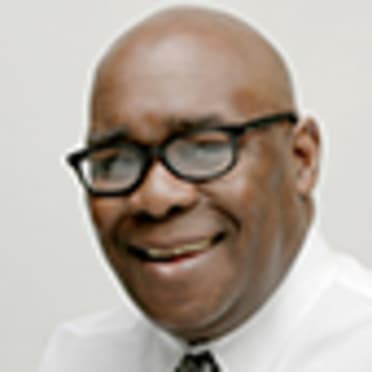Monte Irvin was close to breaking color barrier
The Negro Leagues Baseball Museum is celebrating the 100th anniversary of the start of the Negro Leagues, and MLB.com’s Bill Ladson has written a series of articles on some of the leagues' legends. This one is about Monte Irvin, who also found success in the big leagues.
NEW YORK -- It could have been him.
On April 15, 1947, Dodgers first baseman Jackie Robinson stepped into the batter’s box against the Braves, breaking Major League Baseball’s color barrier. Robinson was chosen for many good reasons, but he wasn’t the first person Negro League owners had in mind when considering who should be the one to break the color barrier.
No, the owners’ first choice was Monte Irvin.
Like Robinson, Irvin was college educated, having attended Lincoln University in Pennsylvania. He had been an outstanding player during his nine years with the Newark Eagles, while Robinson played just one year in the Negro Leagues. Irvin was a five-tool player, according to Bob Kendrick, president of the Negro Leagues Baseball Museum. Even Dodgers GM Branch Rickey was impressed by what he saw in Irvin and had considered him to be the first to break the color barrier.
“Monte had the same exact qualities that Jackie had,” Kendrick said. “He was college educated. He was stable. … Monte had everything to be a star. He was just an amazing man who just happened to be a great baseball player. You can make a case that he was a better baseball player than Jackie was at that time. That is not to disparage Jackie, but to show how good Monte Irvin was.”
But it wasn’t to be. Irvin had served in the 1313th Engineer General Service Regiment from 1942-45, seeing action in the Battle of the Bulge. When Rickey showed interest in him, Irvin said he wasn’t ready to play Major League Baseball so soon after the war.
“Mentally, he was suffering what was called ‘shell shock.' Today [it's called] post-traumatic stress disorder,” Kendrick said.
Irvin instead sharpened his skills playing for San Juan in the Puerto Rican Winter League, where he won the MVP in 1945 and ’46. It was there that Irvin met an 11-year-old named Roberto Clemente, who went on to become one of the greatest players in baseball history. In 2001, MLB.com’s Tom Singer caught up with Irvin, who remembered his friendship with Clemente.
"There'd be youngsters hanging around, and we'd let the kids carry our bags to get in the park for free," Irvin recalled. "Roberto and Orlando Cepeda, they were always there together.
"Clemente always told me he developed a throwing arm like mine because he'd always admired the way I threw the ball. When he got into the Majors, we renewed our friendship. We used to reminisce about the good old days in Puerto Rico."
With Irvin returning to form in Puerto Rico and with the Negro League Newark Eagles -- where Irvin won a batting title and led the Eagles to the Negro World Series title in 1946 -- Rickey turned to Robinson, and the opportunity to be the first player to cross the color line passed.
Irvin's rights were sold to the Giants in 1949, but at age 30, he was not quite the same player he had been with the Eagles. Still, he helped lead the Giants to two pennants (1951 and ’54) and one World Series title (‘54). His best season was in ‘51, when he led the team in WAR (6.9), batting average (.312), home runs (24) and RBIs (121).
Perhaps more important, however, was that Irvin became a mentor to Willie Mays, who ended up being one of the best players in baseball history. Irvin was also part of the Major Leagues' first all-black outfield that featured Mays and Hank Thompson.
"He taught me a lot of things about life," Mays said, reflecting on Irvin on NPR’s All Things Considered upon his passing in 2016. "I already knew how to play the game, but sometimes you need a little more. You need to know how to treat people. You need to know how when you hit a home run, you run around the bases -- you don't stop and show anybody up. Thinking was more important to him than just playing the game."
Irvin moved on to the Cubs in 1956. He didn’t play every day, but nevertheless drove in 50 runs in 111 games in what would be his final season. After his playing career ended, Irvin spent most of his time as a public relations specialist for MLB under Commissioner Bowie Kuhn. In fact, Irvin represented MLB when Hank Aaron broke Babe Ruth’s career home run record in 1974.
“It was almost appropriate that a fellow Negro Leaguer would be there to see Hank Aaron break Ruth’s record,” Kendrick said. “His work in Major League Baseball was also significant.”
He was inducted into the Baseball Hall of Fame in 1973 for his Negro League career.
"I'm philosophical about it,” Irvin said of having to spend his best years in the Negro Leagues rather than the Major Leagues. “There's no point in being bitter. You're not happy with the way things happen, but why make yourself sick inside? There were many guys who could really play who never got a chance at all."
Irvin was 96 when he passed away in 2016. One could hear the joy in Kendrick’s voice when he talks about Irvin.
“He had a tremendous career who probably doesn’t get his just due in the entire equation,” Kendrick said.”I have the utmost respect and admiration for a man who I was very proud to call a friend.”
